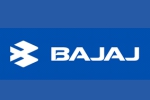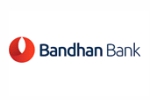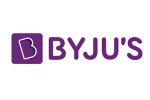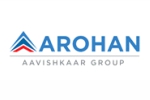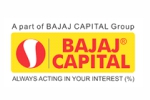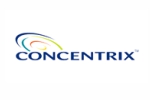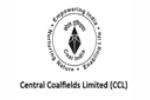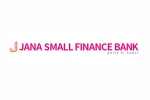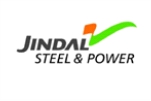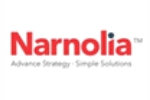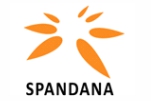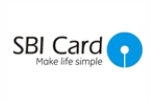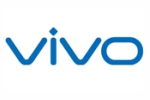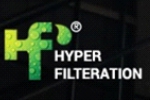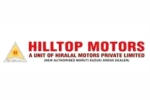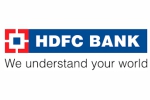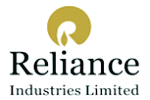



B.Tech in Electrical Vehicle Engineering is a specialized undergraduate degree program that focuses on the design, development, and integration of electric vehicles (EVs) and their associated technologies. Programs include activities like laboratory work, projects, and workshops. Students might work with electric vehicle components, simulation software, and testing equipment. The working professionals get the opportunity to work on real-world projects related to electric vehicle design, development, and testing. Internships with automotive companies, EV manufacturers, and research institutions can provide practical exposure.
1. B.Tech- Electrical Vehicle Engineering for Working Professional is a degree course, recognized by UGC.
2. The program has seven semesters adequately designed to nurture the professional with thorough knowledge of engineering subjects where classes are conducted online and with flexibility that is on weekends or after the business hours to suit the requirement of professionals.
3. Online exams are held with exam safety and appropriate assessments are done to evaluate the knowledge level of the candidate.
4. Experienced industry professionals, guest lecturers and renowned faculties take up classes and deliver lectures to make professional understand each and every concept of engineering.
5. The Dissertation enables students to comprehend the course and topics taught and apply in their current professional work.
6. An appropriate Evaluation system is used for assessment of the professionals at regular intervals and propels them to stay connected with the course programs and its application.
7. The students on successfully completion of the Degree Program are awarded with Bachelor’s Degree in Electrical Vehicle Engineering.
Course Structure
of
B. Tech in Electric Vehicle Technology
Department of Mechanical Engineering
| Semester 1 | |||||||||
| Sl. No | Course Code | Name of the Course | Assessment Pattern | ||||||
| L | T | P | C | IA | MTE | ETE | |||
| 1 | BBS01T1001 | Multi Variable Calculus | 3 | 0 | 2 | 4 | 20 | 30 | 100 |
| 2 | BLL01T1003 | Communication Skills | 2 | 0 | 0 | 2 | 10 | 15 | 25 |
| 3 | BCS01T1003 | Programming for Problem Solving – C | 1 | 0 | 4 | 3 | 10 | 15 | 25 |
| 4 | BBS01T1002 | Semi-conductor Physics | 2 | 0 | 2 | 3 | 10 | 15 | 25 |
| 5 | BME01T1001 | Engineering Graphics & Introduction to Digital Fabrication | 1 | 0 | 2 | 2 | 10 | 15 | 25 |
| 6 | BEE01T1003 | Basic Electrical & Electronics Engineering | 2 | 0 | 2 | 3 | 10 | 15 | 25 |
| 7 | BCS01T1002 | AI Fundamental | 2 | 0 | 0 | 2 | 10 | 15 | 25 |
| 8 | BCS01T1001 | Data Analytics Excel Tableau | 0 | 1 | 2 | 2 | 10 | 15 | 25 |
| 9 | BLEUCP1004 | YOGA (Zero Credit Course) | Non-Credit Course | ||||||
| Total | 21 | ||||||||
| Semester II | |||||||||
| Sl. No | Course Codee | Name of the Course | Assessment Pattern | ||||||
| L | T | P | C | IA | MTE | ETE | |||
| 1 | BBS01T1008 | Biology for Engineers* | 3 | 0 | 0 | 3 | 20 | 30 | 50 |
| 2 | BEE01T1004 | Embedded system & IOT | 1 | 0 | 2 | 2 | 10 | 15 | 25 |
| 3 | BBS01T1003 | Linear Algebra & Differential Equations | 3 | 0 | 0 | 3 | 20 | 30 | 50 |
| 4 | BEE01T1005 | Introduction to Digital Systems | 2 | 0 | 2 | 3 | 10 | 15 | 25 |
| 5 | BCS01T1010 | Introduction to Python Programming | 2 | 0 | 2 | 3 | 10 | 15 | 25 |
| 6 | BEE01T1006 | AC & DC Machines | 1 | 0 | 2 | 2 | 10 | 15 | 25 |
| 7 | BLEUCT1003 | Creativity, Innovation & Entrepreneurship | 1 | 0 | 2 | 2 | 10 | 15 | 25 |
| 8 | BLEUCT1002 | Creative & Liberal Arts | 0 | 0 | 2 | 1 | 50 | - | 50 |
| 9 | BEE01T1001 | Electrical Workshop | 1 | 0 | 2 | 2 | 10 | 15 | 25 |
| 10 | BCS01T1011 | Alexa Skilling | 0 | 0 | 2 | 0 | 10 | 15 | 25 |
| 11 | BBSUCT1004 | Environmental Sciences (Zero Credit Course) | 2 | 0 | 0 | 0 | 10 | 15 | 25 |
| Total | 21 | ||||||||
| Semester III | |||||||||
| Sl No | Course Code | Name of the Course | Assessment Pattern | ||||||
| L | T | P | C | IA | MTE | ETE | |||
| 1 | BECE2010 | Digital Electronics | 3 | 0 | 0 | 3 | 20 | 30 | 50 |
| 2 | MATH2001 | Functions of Complex Variables and Transforms | 3 | 0 | 0 | 3 | 20 | 30 | 50 |
| 3 | BECE2012 | Electromagnetic Field Theory | 3 | 0 | 0 | 3 | 20 | 30 | 50 |
| 4 | BECE2015 | Electronic Devices and Circuits | 3 | 0 | 0 | 3 | 20 | 30 | 50 |
| 5 | BTEE2002 | Network Analysis and Synthesis | 3 | 0 | 0 | 3 | 20 | 30 | 50 |
| 6 | BECE2016 | Signals and Systems | 3 | 0 | 0 | 3 | 20 | 30 | 50 |
| 7 | BEE02T2003 | Design and Engineering/ Transducer and IOT | 2 | 0 | 0 | 1 | 20 | 30 | 50 |
| 8 | BTEE2003 | Network Analysis and Synthesis Lab | 0 | 0 | 2 | 1 | 50 | 50 | |
| 9 | BEE02P2003 | Engineering Clinic-1 | 0 | 0 | 2 | 1 | 50 | 50 | |
| 10 | SLBT2021 | English Proficiency and Aptitude Building - 3 | 0 | 0 | 2 | 1 | 50 | - | 50 |
| 11 | BEE02P2010 | Electronic Devices and Digital Circuits Lab | 0 | 0 | 2 | 1 | 50 | 50 | |
| Total | 23 | ||||||||
| Semester IV | |||||||||
| Sl. No | Course Code | Name of the Course | Assessment Pattern | ||||||
| L | T | P | C | IA | MTE | ETE | |||
| 1 | MATH2004 | Probability and Stochastic Processes | 3 | 0 | 0 | 3 | 20 | 30 | 50 |
| 2 | BEEE3002 | Control Systems | 3 | 0 | 0 | 3 | 20 | 30 | 50 |
| 3 | BTEE2006 | Electrical Machine-1 | 3 | 0 | 0 | 3 | 20 | 30 | 50 |
| 4 | BTEE2008 | Fundamentals of Power Systems | 3 | 0 | 0 | 3 | 20 | 30 | 50 |
| 5 | BTEE3015 | Power Plant Engineering | 3 | 0 | 0 | 3 | 20 | 30 | 50 |
| 6 | BEEE2001 | Electrical Measurement and Instrumentation | 3 | 0 | 0 | 3 | 20 | 30 | 50 |
| 7 | BEE02P2007 | Engineering Clinic-2 (IOT based Tinker CAD) | 0 | 0 | 2 | 1 | 50 | 50 | |
| 8 | BTEE2007 | Electrical Machine Lab-1 | 0 | 0 | 2 | 1 | 50 | 50 | |
| 9 | BEE02P2009 | Measurement and Control Systems Lab | 0 | 0 | 2 | 1 | 50 | 50 | |
| 10 | BEE02P2008 | Logical and Critical Reasoning | 0 | 0 | 2 | 1 | 50 | 50 | |
| 11 | BTEE2011 | Introduction to Electrical Vehicles | 3 | 0 | 0 | 3 | 20 | 30 | 50 |
| Total | 25 | ||||||||
| Semester V | |||||||||
| Sl No | Course Code | Name of the Course | Assessment Pattern | ||||||
| L | T | P | C | IA | MTE | ETE | |||
| 1 | BECE3004 | Microcontroller and Embedded system | 3 | 0 | 0 | 3 | 20 | 30 | 50 |
| 2 | BTEE3004 | Electrical Machine-2 | 3 | 0 | 0 | 3 | 20 | 30 | 50 |
| 3 | BTEE3009 | Power System Analysis | 3 | 0 | 0 | 3 | 20 | 30 | 50 |
| 4 | BTEE3011 | Power Electronics | 3 | 0 | 0 | 3 | 20 | 30 | 50 |
| 5 | ******** | Program Elective-I | 3 | 0 | 0 | 3 | 20 | 30 | 50 |
| 6 | ******** | Program Elective-II | 3 | 0 | 0 | 3 | 20 | 30 | 50 |
| 7 | BEE02P3001 | Engineering Clinic-3(Industrial Internship) | 0 | 0 | 2 | 1 | 50 | 50 | |
| 8 | BEE02P3002 | Effective Leadership and Decision-making Skills | 0 | 0 | 2 | 1 | 50 | 50 | |
| 9 | BECE3005 | Microcontroller and Embedded Systems Lab | 0 | 0 | 2 | 1 | 50 | 50 | |
| 10 | BEE01T3003 | Database Management System | 0 | 0 | 2 | 1 | 50 | 50 | |
| 11 | BEE02T3004 | Finance for Electrical Engineers | 2 | 0 | 0 | 1 | 20 | 30 | 50 |
| 12 | BTEE3005 | Electrical Machine Lab-2 | 0 | 0 | 2 | 1 | 50 | 50 | |
| 13 | BTEE3015 | Electric Vehicles Architecture | 3 | 0 | 0 | 3 | 20 | 30 | 50 |
| 14 | BTEE3016 | Project-1 (EV) | 0 | 0 | 4 | 2 | 50 | 50 | |
| Total | 29 | ||||||||
| Semester VI | |||||||||
| Sl. No | Course Code | Name of the Course | Asses sment Pattern | ||||||
| L | T | P | C | IA | MTE | ETE | |||
| 1 | SLBT3002 | Campus to Corporate program | 0 | 0 | 4 | 2 | 50 | 50 | |
| 2 | BEE02T3005 | High Voltage Engineering | 3 | 0 | 0 | 3 | 20 | 30 | 50 |
| 3 | BEE02T3006 | Power System protection | 3 | 0 | 0 | 3 | 20 | 30 | 50 |
| 4 | BTEE4005 | Professional Ethics and Values | 2 | 0 | 0 | 0 | 20 | 30 | 50 |
| 5 | ******** | Program Elective-III | 3 | 0 | 0 | 3 | 20 | 30 | 50 |
| 6 | ******** | Program Elective-IV | 3 | 0 | 0 | 3 | 20 | 30 | 50 |
| 7 | BTEE4013 | Electrical Machine Design | 3 | 0 | 0 | 3 | 20 | 30 | 50 |
| 8 | BEE02P3008 | Design and Innovation Project | 0 | 0 | 2 | 1 | 50 | 50 | |
| 9 | BEE02P3007 | Power System protection Lab | 0 | 0 | 2 | 1 | 50 | 50 | |
| 10 | GERN1001/J APA1001/FR EN1001 | Foreign Language - 1 (German, Japanese, French) *any one | 0 | 0 | 2 | 0 | 50 | 50 | |
| 11 | BEE02P3008 | Machine Learning Using Python Programming | 0 | 0 | 2 | 1 | 50 | 50 | |
| 12 | BEE02T4001 | Electrical Design, Estimation and Energy Audit | 3 | 0 | 0 | 3 | 20 | 30 | 50 |
| 13 | BTEE3008 | PLC/SCADA Lab | 0 | 0 | 2 | 1 | 50 | 50 | |
| 14 | BTEE3017 | Energy Storage Systems | 3 | 0 | 0 | 3 | 20 | 30 | 50 |
| 15 | BTEE3018 | Project-2 (EV) | 0 | 0 | 4 | 2 | 50 | 50 | |
| Total | 29 | ||||||||
| Semester VII | |||||||||
| Sl No | Course Code | Name of the Course | Assessment Pattern | ||||||
| L | T | P | C | IA | MTE | ETE | |||
| 1 | ******** | Program Elective-V | 3 | 0 | 0 | 3 | |||
| 2 | ******** | Program Elective-VI | 3 | 0 | 0 | 3 | |||
| 3 | ******** | Open Elective-1 | 3 | 0 | 0 | 3 | 20 | 30 | 50 |
| 4 | ******** | Open Elective-2 | 3 | 0 | 0 | 3 | 20 | 30 | 50 |
| 5 | BEE03P4003 | Industrial Internship | 0 | 0 | 0 | 0 | 50 | 50 | |
| 6 | BEE02P4005 | Technical Seminar | 0 | 0 | 2 | 0 | 50 | 50 | |
| 7 | BEE02P4002 | Capstone Design Phase-I | 0 | 0 | 10 | 2 | 50 | 50 | |
| 8 | GERN/JAPA/ FREN 1002 | Foreign Language - 2 (German, Japanese, French) *Optional | 0 | 0 | 2 | 0 | 50 | 50 | |
| 9 | BTEE4021 | Electrical Vehicles controls and Drives | 3 | 0 | 0 | 3 | 20 | 30 | 50 |
| 10 | BTEE4022 | Project-3 (EV) | 0 | 0 | 4 | 2 | 50 | 50 | |
| Total | 19 | ||||||||
| Semester VIII | ||||||||||
| Sl No | Course Code | Name of the Course | Assessment Pattern | |||||||
| L | T | P | C | IA | MTE | ETE | ||||
| 1 | BEE02P4003 | Capstone Design phase - II | 0 | 0 | 18 | 6 | 50 | 50 | ||
| 2 | BEE02P4004 | Industrial Internship & Technical Seminar | 0 | 0 | 0 | 6 | 50 | 50 | ||
| Total | 12 | |||||||||
List of courses of Specialization in Electric Vehicle
| Sl No | Course Code | Name of the Electives | Assessment Pattern | ||||||
| L | T | P | C | IA | MTE | ETE | |||
| 1 | BTEE2011 | Introduction to Electrical Vehicles | 3 | 0 | 0 | 3 | 20 | 30 | 50 |
| 2 | BTEE3015 | Electric Vehicles Architecture | 3 | 0 | 0 | 3 | 20 | 30 | 50 |
| 3 | BTEE3016 | Project-1 (EV) | 0 | 0 | 4 | 2 | 50 | 50 | |
| 4 | BTEE3017 | Energy Storage Systems | 3 | 0 | 0 | 3 | 20 | 30 | 50 |
| 5 | BTEE3018 | Project-2 (EV) | 0 | 0 | 4 | 2 | 50 | 50 | |
| 6 | BTEE4021 | Electrical Vehicles controls and Drives | 3 | 0 | 0 | 3 | 20 | 30 | 50 |
| 7 | BTEE4022 | Project-3 (EV) | 0 | 0 | 4 | 2 | 50 | 50 | |
| Total | 18 | ||||||||
List of Program Electives Control Engineering
| Sl No | Course Code | Name of the Electives | Assessment Pattern | ||||||
| L | T | P | C | IA | MTE | ETE | |||
| 1 | BTEE3019 | Advanced Control System | 3 | 0 | 0 | 3 | 20 | 30 | 50 |
| 2 | BTEE3020 | Industrial Automation and Control | 3 | 0 | 0 | 3 | 20 | 30 | 50 |
| 3 | BEE02T5001 | Industrial Instrumentation and Automation | 3 | 0 | 0 | 3 | 20 | 30 | 50 |
| 4 | BEEE5005 | Power System Operation and Control | 3 | 0 | 0 | 3 | 20 | 30 | 50 |
| 5 | BEEE5004 | Digital Control | 3 | 0 | 0 | 3 | 20 | 30 | 50 |
| 6 | BEE03T5002 | Automation and Robotics | 3 | 0 | 0 | 3 | 20 | 30 | 50 |
Power Engineering
| Sl No | Course Code | Name of the Elective | Assessment Pattern | ||||||
| L | T | P | C | IA | MTE | ETE | |||
| 1 | BEE03T5011 | Power System Equipment’s | 3 | 0 | 0 | 3 | 20 | 30 | 50 |
| 2 | BTEE3023 | Power Quality | 3 | 0 | 0 | 3 | 20 | 30 | 50 |
| 3 | BTEE4001 | Electric Drives | 3 | 0 | 0 | 3 | 20 | 30 | 50 |
| 4 | BTEE4010 | FACTS and HVDC | 3 | 0 | 0 | 3 | 20 | 30 | 50 |
| 5 | BEE02T5003 | Electrical and Hybrid Vehicle | 3 | 0 | 0 | 3 | 20 | 30 | 50 |
| 6 | BTEE4009 | Power System Deregulation | 3 | 0 | 0 | 3 | 20 | 30 | 50 |
Energy Engineering
| Sl No | Course Code | Name of the Elective | Assessment Pattern | ||||||
| L | T | P | C | IA | MTE | ETE | |||
| 1 | BEEE2018 | Non-conventional Energy Resources | 3 | 0 | 0 | 3 | 20 | 30 | 50 |
| 2 | BTEE4011 | Energy Assessment and Audit | 3 | 0 | 0 | 3 | 20 | 30 | 50 |
| 3 | BTEE5102 | Utilization of Electrical Energy and Traction System | 3 | 0 | 0 | 3 | 20 | 30 | 50 |
| 4 | BEE03T5010 | Power Electronics applications in Renewable Energy | 3 | 0 | 0 | 3 | 20 | 30 | 50 |
| 5 | BTEE5202 | Special Electrical Machine | 3 | 0 | 0 | 3 | 20 | 30 | 50 |
| 6 | BEE02T5004 | Energy Modelling Simulation Using MATLAB | 3 | 0 | 0 | 3 | 20 | 30 | 50 |
| 7 | BEEE4001 | Smart Grid and Energy management | 3 | 0 | 0 | 3 | 20 | 30 | 50 |
Processing and Computing Techniques
| Sl No | Course Code | Name of the Elective | Assessment Pattern | ||||||
| L | T | P | C | IA | MTE | ETE | |||
| 1 | BTEE4012 | Machine learning | 3 | 0 | 0 | 3 | 20 | 30 | 50 |
| 2 | BEE02T5005 | Image Processing using MATLAB | 3 | 0 | 0 | 3 | 20 | 30 | 50 |
| 3 | BEE02T5006 | Introduction to Scilab and its applications | 3 | 0 | 0 | 3 | 20 | 30 | 50 |
| 4 | BEE02T5008 | Human Computer Interface | 3 | 0 | 0 | 3 | 20 | 30 | 50 |
| 5 | BECE3020 | Digital Signal Processing | 3 | 0 | 0 | 3 | 20 | 30 | 50 |
| 6 | BECE4401 | Soft Computing | 3 | 0 | 0 | 3 | 20 | 30 | 50 |
| 7 | BTEE4015 | Neural Networks and Fuzzy Control | 3 | 0 | 0 | 3 | 20 | 30 | 50 |
| 8 | BEE02T5007 | Neural Networks and Deep Learning Algorithms | 3 | 0 | 0 | 3 | 20 | 30 | 50 |
| List of Open elective (Engineering courses) Proposed | |||||||||
| Basket 1 | |||||||||
| Sl. No. | Course Code | Course Title | Assessment Pattern | ||||||
| Basket 1 | L | T | P | C | IA | MTE | ETE | ||
| 1 | BOE601 | Human Computer Interface | 3 | 0 | 0 | 3 | 20 | 50 | 100 |
| 2 | BOE602 | Introduction to cyber–Physical Systems | 3 | 0 | 0 | 3 | 20 | 50 | 100 |
| 3 | BOE603 | Selected Topics in Signal Processing | 3 | 0 | 0 | 3 | 20 | 50 | 100 |
| 4 | BOE604 | Selected Topics in Communication Engineering | 3 | 0 | 0 | 3 | 20 | 50 | 100 |
| 5 | BOE605 | Autonomous Vehicles | 3 | 0 | 0 | 3 | 20 | 50 | 100 |
| 6 | BOE606 | Data Science | 3 | 0 | 0 | 3 | 20 | 50 | 100 |
| 7 | BOE607 | Computer Vision | 3 | 0 | 0 | 3 | 20 | 50 | 100 |
| 8 | BOE608 | Artificial Intelligence | 3 | 0 | 0 | 3 | 20 | 50 | 100 |
| 9 | BOE609 | Cyber Security | 3 | 0 | 0 | 3 | 20 | 50 | 100 |
| 10 | BOE610 | Energy Management | 3 | 0 | 0 | 3 | 20 | 50 | 100 |
| 11 | BOE611 | Estimation and Costing | 3 | 0 | 0 | 3 | 20 | 50 | 100 |
| 12 | BOE612 | Data Envelopment Analysis | 3 | 0 | 0 | 3 | 20 | 50 | 100 |
| 13 | BOE613 | Operation Management | 3 | 0 | 0 | 3 | 20 | 50 | 100 |
| 14 | BOE614 | Construction Engineering | 3 | 0 | 0 | 3 | 20 | 50 | 100 |
| 16 | BOE615 | Disaster Management | 3 | 0 | 0 | 3 | 20 | 50 | 100 |
| 16 | BOE616 | Bioinformatics | 3 | 0 | 0 | 3 | 20 | 50 | 100 |
| Basket-2 | |||||||||
| 1 | BOE701 | Remote Sensing and GIS | 3 | 0 | 0 | 3 | 20 | 50 | 100 |
| 2 | BOE702 | Automotive Electronics | 3 | 0 | 0 | 3 | 20 | 50 | 100 |
| 3 | BOE703 | Sensors & Actuators | 3 | 0 | 0 | 3 | 20 | 50 | 100 |
| 4 | BOE704 | IoT and Smart Cities | 3 | 0 | 0 | 3 | 20 | 50 | 100 |
| 5 | BOE705 | Web Design and Management | 3 | 0 | 0 | 3 | 20 | 50 | 100 |
| 6 | BOE706 | Principles of Telemedicine | 3 | 0 | 0 | 3 | 20 | 50 | 100 |
| 7 | BOE707 | Mobile Application Development | 3 | 0 | 0 | 3 | 20 | 50 | 100 |
| 8 | BOE708 | Business Analytics | 3 | 0 | 0 | 3 | 20 | 50 | 100 |
| 9 | BOE709 | Cloud Computing | 3 | 0 | 0 | 3 | 20 | 50 | 100 |
| 10 | BOE710 | Block Chain | 3 | 0 | 0 | 3 | 20 | 50 | 100 |
| 11 | BOE711 | Augmented / Virtual Reality | 3 | 0 | 0 | 3 | 20 | 50 | 100 |
| 12 | BOE712 | Digital Forensics | 3 | 0 | 0 | 3 | 20 | 50 | 100 |
| 13 | BOE713 | Operations Research | 3 | 0 | 0 | 3 | 20 | 50 | 100 |
| 14 | BOE714 | Renewable Energy | 3 | 0 | 0 | 3 | 20 | 50 | 100 |
| 15 | BOE715 | Interior Design | 3 | 0 | 0 | 3 | 20 | 50 | 100 |
| 16 | BOE716 | Landscaping | 3 | 0 | 0 | 3 | 20 | 50 | 100 |
| 17 | BOE717 | Biology for Engineers | 3 | 0 | 0 | 3 | 20 | 50 | 100 |
B. Tech MECHANICAL ENGINEERING SYLLABUS
BASIC ELECTRICAL & ELECTRONICS ENGINEERING (BEE01T1003)1-2-2 Unit-1 8 hrs D.C. Circuits:Circuits Elements(R, L, C), Kirchhoff ‘s Laws, Superposition Principle and theorem, Norton ‘s theorem, Thevenin ‘s Theorem, Voltage source, (definition,characteristics of practical source, equivalent current source), Star-Delta transformation. Unit-2 7 hrs Magnetic circuits:Flux, mmf, reluctance, analogous electric circuits, simple calculations for composite magnetic circuits. Unit-3 10 hrs
Text Books:
List of Experiment
| 1. | To Verify KVL & KCL. |
| 2. | To plot B-H Curve of Magnetic Material. |
| 3. | Verification of Line Voltage and Phase Voltage in Three Phase Star Connected Balanced Load. |
| 4. | Study of phase relationship in R-L-C network by computer simulation using P-SIM Software. |
| 5. | Open Ended 1. To Study 11 KV distribution Substation (Overview). 2. To Study Ferranti Effect. 3. To Study different types of FACT Controller. 4)To Study Comparison between DC Motor & Induction Motor. |
Course Outcomes
| CO1 | Understand relationship between different electrical parameters. |
| CO2 | Students will develop an ability to analyze D.C Circuits of different configurations. |
| CO3 | Understand magnetic aspects of electric current. |
| CO4 | Students will develop an ability to analyze A.C. Circuits of different configurations |
| CO5 | Students will develop an ability to analyze Resonance Circuits. |
AC AND DC MACHINE(BEE01T1006)2-0-2 Unit-1 10 hrs Single Phase Transformers:Introduction, Basic principle, construction of phasor diagram for transformer under no load condition, Transformer on load, EMF equation Phasor diagrams, Equivalent circuit, Losses, Efficiency, Regulation, Open-circuit & short-circuit test. Unit-2 10 hrs D.C Machines:Introduction, construction, EMF and Torque equation, classification, self-excitation of D.C. shuntgenerators, EMF, voltage, current relations in generator and motor, Characteristics, starting and speed control of d. c. motors. Unit-3 10 hrs Introduction to A.C Machines:Three phase Induction motor Construction, and principle of rotating field, synchronous speed, Rotor current, torque and slip, Principle of Single-phaseCapacitor Start motor. Text Books:
Course Outcomes
| CO1 | Understand Concepts of energy transfer through magnetic coupling. |
| CO2 | Understand working principle of transformer. |
| CO3 | Understand Concepts of D.C machines. |
| CO4 | Understand Operation of A.C machines. |
INTRODUCTION TO DIGITAL SYSTEMS (BEE01T1005) 2-2-3 Unit-I: Number Systems & Boolean Algebra 8 hrs Decimal, binary, octal, hexadecimal number system and conversion, binary weighted & non-weighted codes & code conversion, signed numbers, 1s and 2s complement codes, Binary arithmetic, Binary logic functions, Boolean laws, truth tables, associative and distributive properties, De-Morgan ‘s theorems, realization of switching functions using logic gates. Logic families: TTL, ECL, CMOS. Unit-2: Combinational Logic 8 hrs Switching equations(Mathematical operations), canonical logic forms, sum of product & product of sums, Karnaugh maps, two, three and four variable Karnaugh maps, simplification of expressions, mixed logic combinational circuits, multiple output functions, QuineMcluskey Methods for 5 variables. Introduction to combinational circuits, code conversions, decoder, encoder, priority encoder, multiplexers & De-multiplexer, binary adder, Subtractor, BCD adder, carry look ahead adder, Binary comparator, Arithmetic Logic Units. Unit-3: Sequential Logic & Circuits: 8 hrs Latch, flip-flops, clocked and edge triggered flip-flops, timing specifications, asynchronous and synchronous counters counter design, Registers, types of registers. Analysis of simple synchronous sequential circuits Text Books:
| Sr. No. | Title | Author Name | Publisher | Year of Publication | Edition |
| 1 | Digital Electronics | R P Jain | McGraw Hill | 2017 | Second |
| 2 | Digital Logic and Computer Design | Morris Mano | PHI | 2017review | Second |
| 3 | Digital Electronic Principles- | Malvino | PHI | 2011-13 | Seventh |
List of Experiment
| Course Outcome (COs) | |
| CO1 | Solve the problems on Number system codes and their conversions. |
| CO2 | Identify Digital IC and implement in the circuits. |
| CO3 | Create, design and simulate canonical logic forms |
| CO4 | Demonstrate the application of combinational and sequential logic circuits. |
EMBEDDED TECHNOLOGY AND IOT (BEE01T1004) 1-2-2 UNIT-1: Introduction to Embedded System 6 hrs Basic components of Embedded system, Programming Language Classification of Embedded system, Advantage & Disadvantage, Difference between Microprocessor & Microcontroller, Classification based on architecture, Memory Classification, Description of RAM, Description of CPU Registers, Introduction to Embedded C, Difference between C & Embedded C. UNIT-2: Control Statements and Functions6 hrs Decision making with if statement, If…else statement, Switch statement, GOTO statement, The While and Do – While statements, For statement, Why Functions, Types of Functions, Multifunctional program, Return values & their types UNIT-3: Embedded Software and Hardware Interfacing 6 hrs Kiel Compiler, Proteus, Interfacing of LED, seven segment display,LCD, Switches, Keyboard, Serial Communication, Sensors. UNIT-4: Introduction to IoT 3 hrs Internet of Things - Physical Design- Logical Design- IoT Enabling Technologies - IoT Levels & Deployment Templates List of Experiment At least SIX experiments need to be performedList of Experiments.
| Course Outcome (COs) | |
| CO1 | Understand the concept of embedded system, microcontroller, different components of microcontroller and their interactions. |
| CO2 | Recognize and analyze given embedded system design and its performance. |
| CO3 | Identify the programming environment to develop embedded solutions. |
| CO4 | Demonstrate application-based competencies in Embedded Programming |
| CO5 | Identify and adopt knowledge of the terminology, requirements and constraints for IoT system development. |
| CO6 | Demonstrate IoT system for smaller applications |
ELECTRICAL WORKSHOP (BEE01T1001) 1-2-2 Unit I: Electrical Tools and Wiring10 hrs Study of various electrical tools and symbols, Safety aspects of electrical systems, types of cables/wires and switches, fuses & fuse carriers, MCB andELCB,two-way switches. Household Wiring of power distribution, main switch and energy meter. Unit II: Measuring Instruments and earthing 10 hrs Voltmeter, Ammeter, Wattmeter and Energy meter using in AC and DC supply, Effect of the power factor, Study of electricity bill, uninterruptible power supply, Earthing and grounding, basic repairing process of domestic appliances. List of experiments
| Course Outcome (COs) | |
| CO1 | Course Outcomes: identify tools, symbols & Safety aspects of electrical systems. |
| CO2 | Explain the various types of wiring and other accessories used in house wiring. |
| CO3 | Measure current, voltage, power and energy in AC/DC circuit. |
| CO4 | Learn the basic repairing process of domestic appliances. |
SEMESTER-III ELECTROMAGNETIC FIELD THEORY (BECE2012) Unit I: Static Electric Fields 9 Hours Introduction to Co-ordinate System – Rectangular –Cylindrical and Spherical Co- ordinate System – Introduction to line, Surface and Volume Integrals – Definition of Curl, Divergence and Gradient – Meaning of Stokes theorem and Divergence theorem Coulomb‘s Law in Vector Form – Definition of Electric Field Intensity – Principle of Superposition – Electric Field due to discrete charges – Electric field due to continuous charge distribution – Electric Field due to charges distributed uniformly on an infinite and finite line – Electric Field on the axis of a uniformly charged circular disc – Electric Field due to an infinite uniformly charged sheet.Electric Scalar Potential – Relationship between potential and electric field – Potential due to infinite uniformly charged line – Potential due to electrical dipole – Electric Flux Density – Gauss Law – Proof of Gauss Law – Applications Unit II: Static Magnetic Fields 8Hours The Biot-Savart Law in vector form – Magnetic Field intensity due to a finite and infinite wire carrying a current I –Magnetic field intensity on the axis of a circular and rectangular loop carrying a current I – Ampere‘s circuital law and simple applications. Magnetic flux density, The Lorentz force equation for a moving charge and applications, Force on a wire carrying a current I placed in a magnetic field – Torque on a loop carrying a current I – Magnetic moment – Magnetic Vector Potential. Unit Iii: Electric and Magnetic Fields in Materials 9 Hours Poisson’s and Laplace’s equation – Electric Polarization-Nature of dielectric materials- Definition of Capacitance – Capacitance of various geometries using Laplace’s equation– Electrostatic energy and energy density – Boundary conditions for electric fields – Electric current – Current density – point form of ohm’s law – continuity equation for current.Definition of Inductance – Inductance of loops and solenoids – Definition of mutual inductance – simple examples. Energy density in magnetic fields – Nature of magnetic materials – magnetization and permeability – magnetic boundary conditions Unt Iv: Time Varying Electric And Magnetic Fields 8 Hours Faraday‘s law – Maxwell‘s Second Equation in integral form from Faraday‘s Law – Equation expressed in point form.Displacement current – Ampere‘s circuital law in integral form – Modified form of Ampere‘s circuital law as Maxwell‘s first equation in integral form – Equation expressed in point form. Maxwell‘s four equations in integral form and differential form.Poynting Vector and the flow of power – Power flow in a co-axial cable – Instantaneous Average and Complex Poynting Vector. Unit V: Electro Magnetic Waves 9 Hours Derivation of Wave Equation – Uniform Plane Waves – Maxwell ‘s equation in Phasor form – Wave equation in Phasor form – Plane waves in free space and in a homogenous material. Wave equation for a conducting medium – Plane waves in lossy dielectrics –Propagation in good conductors – Skin effect. Linear, Elliptical and circular polarization – Reflection of Plane Wave from a conductor – normal incidence – Reflection of Plane Waves by a perfect dielectric – normal and oblique incidence. Dependence on Polarization, Brewster angle. Reference Books
NETWORK ANALYSIS AND SYNTHESIS (BTEE2002) Unit-1: GraphTheory 6 hours Graph of a Network, definitions, tree, co tree, link, basic loop and basic cut set,Incidence matrix, cut set matrix, Tie set matrix Duality, Loop and Nodal methods of analysis. Unit-II: Network Theorems (Applications to ACNetworks) 9 hours Super-position theorem, Thevenin’s theorem, Norton’s theorem, maximum power transfer theorem, Reciprocity theorem. Millman’s theorem, compensation theorem, Tellegen’s theorem. Unit-III: Network Functions and Transient analysis 11 hours Transform Impedances Network functions of one port and two port networks, concept of poles and zeros, properties of driving point and transfer functions, time response and stability from pole zero plot, transient analysis of ac & dc systems. Unit-IV: Two Port Networks 10 hours Characterization of LTI two port networks ZY, ABCD and h parameters, reciprocity and symmetry. Interrelationships between the parameters, inter-connections of two port networks, T & Π Representation. Unit-V: Network Synthesis & Filters 9 hours Positive real function; definition and properties; properties of LC, RC and RL driving point functions, synthesis of LC, RC and RL driving point immittance functions using Foster and Causer first and second forms. Image parameters and characteristics impedance. Text Book (s)
Reference Books
NETWORK ANALYSIS AND SYNTHESIS LAB (BTEE2003) Network Analysis and Synthesis Lab 1 To verify Thevenin’s theorem in A.C. 2 To verify Norton’s theorem in A.C. 3 To verify Superposition theorem in A.C. 4 To verify the Maximum Power Transfer Theorem. 5 Determination of Z-parameters of a two-port network. 6 To verify and determination of y-parameters of a parallel connected two-port network. 7 Determination of h-parameters of a two-port network. 8 To verify and determination of ABCD-parameters of a cascade interconnected two-port network. 9 Determination of characteristics impedance of a symmetrical T-network using S/C and O/C test. SIGNALS AND SYSTEMS (BECE2016) Unit-I: Introduction 8 hours Signals and systems as seen in everyday life, and in various branches of engineering and science. Types of signals and their representations: continuous-time/discrete-time, periodic/non-periodic, even/odd, energy/power, deterministic/ random, one dimensional/ multidimensional; Basic Signals: unit impulse, unit step, unit ramp, exponential, rectangular pulse, sinusoidal; operations on continuous-time and discrete-time signals (including transformations of independent variables) Unit-II: Classification of Systems 8 hours Classification, linearity, time-invariance and causality, impulse response, characterization of linear time-invariant (LTI) systems, unit sample response, convolution summation, step response of discrete time systems, stability, convolution integral, co-relations, signal energy and energy spectral density, signal power and power spectral density, properties of power spectral density. Unit-III: Fourier Series and Transforms 8 hours Continuous-time Fourier series: Periodic signals and their properties, exponential and trigonometric FS representation of periodic signals, convergence, FS of standard periodic signals, salient properties of Fourier series, Definition, conditions of existence of FT, properties, magnitude and phase spectra, Parseval’s theorem, Inverse FT, Discrete time Fourier transform (DTFT), inverse DTFT, convergence, properties and theorems, Comparison between continuous time FT and DTFT. Unit- IV: Laplace Transforms and Z Transforms 8 hours One-sided LT of some common signals, important theorems and properties of LT, inverse LT, solutions of differential equations using LT, Bilateral LT, Regions of convergence (ROC), One sided and Bilateral Z-transforms, ZT of some common signals, ROC, Properties and theorems, solution of difference equations using one-sided ZT, s- to z-plane mapping Unit-V: Analysis of LTI systems 8 hours Analysis of first order and second order systems, continuous-time (CT) system analysis using LT, system functions of CT systems, poles and zeros, block diagram representations; discrete-time system functions, block diagram representation, illustration of the concepts of system bandwidth and rise time through the analysis of a first order CT low pass filter Text Book:
ELECTRONICS DEVICES AND CIRCUITS (BECE2015) Unit-1 Introduction 8 hours BJT and BJT Biasing.Hybrid models of CE, CB, CC, configurations – Study of the effect of emitter by- pass condenser at low frequencies - Hybrid – π common emitter transistor model – hybrid π conductance and capacitance – CE short circuit current gain – current gain with resistive load – gain bandwidth product – Study of the effect of un bypassed emitter resister on amplifier performance, Cascade amplifier. HF & LF compensation of RC coupled amplifier. Multistage Amplifiers. Unit-II: FET and FET Biasing 8 hours FET and FET Biasing. FET Amplifiers: Common source, Common gate and Common drain Amplifiers – problems. Small signal analysis of FET Amplifiers. High Frequency analysis of FET Amplifiers, VMOS & CMOS Concepts. Unit-III: Feedback amplifiers 8 hours The feedback concept – Transfer gain with feedback – general characteristics and advantages of negative feedback– analysis of voltage series, Voltage shunt, current series and current shunt feedback amplifiers – Study of the effect of Negative feedback on Gain, Bandwidth, Noise, Distortion, Input and Output impedances with the help of Block Schematic and Mathematical Expressions Unit-IV: Oscillators 8 hours Sinusoidal oscillators –phase shift oscillator – Wien bridge oscillator – Hartley oscillator – Colpits oscillator – frequency stability, inclusive of design, Crystal oscillators. Unit-V: Tuned amplifiers 8 hours Characteristics of Tuned amplifiers – Analysis of Single tuned, doubled tuned and stagger tuned amplifiers, Gain – bandwidth product – High frequency effect – neutralization. Power Amplifiers: Classification of amplifiers – class A large signal amplifiers – second harmonic distortion – higher order harmonic generations – computation of Harmonic distortion – Transformer coupled audio power amplifier – efficiency – push - pull amplifier – class B amplifier – class AB operation – Push-Pull circuit with Transistors of Complimentary Symmetry. Text Book (s)
Reference Book (s)
DESIGN AND ENGINEERING (BEE02T2003) Unit I:Introduction to design 11 hours Design and its objectives; Design constraints, Design functions, Design means and Design from; Role of Science, Engineering and Technology in design; Engineering as a business proposition; Functional and Strength Designs. Design form, function and strength. How to initiate creative designs? Initiating the thinking process for designing a product of daily use. Need identification; Problem Statement; Unit II: Market Survey 4 hours Market survey customer requirements; Design attributes and objectives; Ideation; Brain storming approaches; arriving at solutions; Closing on to the Design needs. Unit III: Design Process 9 hours Design process- Different stages in design and their significance; Defining the design space; Analogies and ?thinking outside of the box?; Quality function deployment-meeting what the customer wants; Evaluation and choosing of a design. Design Communication; Realization of the concept into a configuration, drawing and model. Concept of ?Complex is Simple?. Design for function and strength. Design detailing- Material selection, Design visualization- Solid modelling; Detailed 2D drawings; Tolerancing; Use of standard items in design; Research needs in design; Energy needs of the design, both in its realization and in the applications. Unit IV: Prototype 8 hours Prototyping- rapid prototyping; testing and evaluation of design; Design modifications; Freezing the design; Cost analysis Engineering the design – From prototype to product. Planning; Scheduling; Supply chains; inventory; handling; manufacturing/construction operations; storage; packaging; shipping; marketing; feed-back on design Text Book (s)
SEMESTER-IV CONTROL SYSTEMS (BEEE3002) Unit-1: Introduction Feedback Control: Open loop and closed control system, servomechanism, Physical examples. Transfer functions of linear time-invariant systems, Block diagram algebra, and Signal flow graph, Mason‘s gain formula Reduction of parameter variation and effects of disturbance by using negative feedback. Unit-2 Standard test signals, time response of first and second order systems, time response specifications, steady state errors and error constants. Design specifications of second order systems: Error analysis. P, PI, PD, PID controllers, design considerations for higher order systems, performance indices. Unit-3 Concept of Stability. Routh-Hurwitz Criteria. Relative Stability analysis, Routh-Hurwitz criteria and limitations, root locus concepts, construction of root locus. Design of controllers using root-locus. Pole placement with state feedback, controllability. Unit-4 Frequency response, correlation between time and frequency responses, polar and inverse polar plots, Bode plots Stability in Frequency Domain: Nyquist stability criterion, assessment of relative stability: gain margin and phase margin, constant M&N circles. Unit-V Application of Proportional, Integral and Derivative Controllers, Lead and Lag compensation in designs in time domain and frequency domain. Review of state variable technique: Text Book (s)
ELECTRICAL MACHINE-I (BTEE2006) Unit-I: Introduction Flow of Energy in Electromechanical Devices, Magnetic Circuit, Analogy b/w Electric and magnetic Ckt, B-H Curve, Hysteresis and eddy current losses, Mutual Coupling with dot convention, Energy in magnetic systems(defining energy & Co-energy), Singly Excited Systems and Doubly excited Systems, Generated emf in machines; torque in machines with cylindrical air gap. Unit-II: Single Phase Transformer Construction- Core and Shell type, Basic principle of Operation, Phasor diagram, efficiency and voltage regulation, all day efficiency. Testing of Transformers: O.C. and S.C. tests, Sumpner ‘s test, polarity test. Auto Transformer: Single phase and three phase auto transformers, volt-amp, relation, efficiency, merits & demerits and applications. Unit-III: Three Phase Transformers Construction, three phase transformer phasor groups and their connections, open delta connection, choice of transformers for three phase circuits, three phase to 2 phase, 6 phase or 12 phase connections, and their applications, parallel operation and load sharing of single phase and three phase transformers, excitation phenomenon and harmonics in transformers, three winding transformers. Unit-IV: D.C. Machines Construction of DC Machines, Armature winding, Emf and torque equation, Armature Reaction, Commutation, Interpoles and Compensating Windings, Methods of improving commutation, Performance Characteristics of D.C. generators, Voltage Regulation, Parallel operation of DC generator (shunt, series and compound machine). Unit-V: D.C. Machines (Contd.) Performance Characteristics of D.C. motors, Starting of D.C. motors; 3-point and 4-point starters, Speed control of D.C. motors: Field Control, armature control and Voltage Control (Ward Lenonard method); Efficiency and Testing of D.C. machines (Hopkinson and Swinburn Test), Electric braking Unit-VI: Special Purpose Transformer Instrument Transformer Current Transformer and Potential Transformer, Earthing Transformer Text Book (s)
Reference Book (s)
ELECTRICAL MACHINE-I LAB (BTEE2007) List of Experiments of Electrical Machine –I x
FUNDAMENTAL OF POWER SYSTEMS (BTEE2008) Unit-1 Power System Components 6 hours Single line Diagram of Power system Brief description of power system Elements: Synchronous machine, transformer, transmission line, bus bar, circuit breaker and isolator Calculation of single and Three phase Power Choice of transmission voltage Transmission line types of conductors and resistance Skin effect Proximity effect Kelvin‘s law Unit-2: Over Head Transmission Lines 6 hours Calculation of inductance single phase, three phase and double circuit Transmission line Calculation of capacitance single phase, three phase and double circuit Transmission line. Unit-3: Over Head Transmission Lines Performance 6 hours Transmission line classification Representation and performance of short Transmission line. Representation and performance of medium nominal T and Nominal Pi Transmission line. Presentation and performance of long Transmission line Surge impedance loading Ferranti effect Unit: 4 Corona and Interference 9 hours Phenomenon of corona and its formation Calculation of potential gradient Corona loss, factors affecting corona and methods of reducing corona Electrostatic and electromagnetic interference with communication lines Type of insulators and their applications Potential distribution over a string of insulators String efficiency and Methods of equalizing the potential. Unit-5 Mechanical Design of transmission line 9 hours Catenary curve of transmission line Sag and tension affect due to ice and wind on sag, Types of insulated cables and its construction Dielectric stress and Insulation resistance. Capacitance measurement of a single phase and three phase cables Dielectric loss and loss triangle. Text Book (s)
Reference Book (s)
POWER PLANT ENGINEERING (BTEE3015) Unit-I Coal based Thermal Power Plants 5 Hours Rankine cycle - improvisations, Layout of modern coal power plant, Super Critical Boilers, FBC Boilers, Turbines, Condensers, Steam & Heat rate. Unit IIComponent of Thermal Power Plant 5 Hours Subsystems of thermal power plants – Fuel and ash handling, Draught system, Feed water treatment. Binary Cycles and Cogeneration systems. Unit-III Diesel, Gas Turbine and Combined Cycle Power Plants 7 Hours Otto, Diesel, Dual & Brayton Cycle - Analysis &Optimisation. Components of Diesel and Gas Turbine power plants. Combined Cycle Power Plants. Integrated Gasifier based Combined Cycle systems. Unit-IV Nuclear Power Plants 8 Hours Basics of Nuclear Engineering, Layout and subsystems of Nuclear Power Plants, Working of Nuclear Reactors: Boiling Water Reactor (B WR), Pressurized Water Reactor (PWR), Canada Deuterium- Uranium reactor (CANDU), Breeder, Gas Cooled and Liquid Metal Cooled Reactors. Safety measures for Nuclear Power plants. Unit-V Power from Renewable Energy 8 Hours Hydro Electric Power Plants – Classification, Typical Layout and associated components including Turbines. Principle, Construction and working of Wind, Tidal, Solar Photo Voltaic (SPV), Solar Thermal, Geo Thermal, Biogas and Fuel Cell power systems. Text/ Reference Books:
ELECTRICAL MEASUREMENTS AND INSTRUMENTATION (BEEE2001) Unit-1Philosophy of Measurement & Analog Measurement of ElectricalQuantities 9 hours Unit& dimensions, standards, Errors, Characteristics of Instruments and measurement system, basics of statistical analysis. PMMC instrument, DC ammeter, DC voltmeter, Ohm meter, Moving Iron instrument, Electrodynamic Wattmeter, errors and remedies, Three Phase Wattmeter, Power in three phase system, Energy meter. ` Unit-2Measurement: Instrument Transformer 6 hours Instrument Transformer and their applications in the extension of instrument range, Introduction to measurement of speed, frequency and power factor. Unit-3Measurement of Parameters 9 hours Different methods of measuring low, medium and high resistances, measurement of inductance & capacitance with the help of AC Bridges- Wheatstone, Kelvin, Maxwell, Hay's, Anderson, Owen, Heaviside, Campbell, Schering, Wien bridges, Wagner Earthing device, Q Meter. Unit-4AC Potentiometer & Magnetic Measurement 7 hours Polar type & Co-ordinate type AC potentiometers, application of AC Potentiometers in electrical measurement. Ballistic Galvanometer, Flux meter. Unit-5Digital Measurement of Electrical Quantities 5 hours Concept of digital measurement, Digital voltmeter, Frequency meter, Power Analyzer and Harmonics Analyzer, Electronic Multimeter. Text Book (s)
Reference Book (s)
INTRODUCTION TO ELECTRICAL VEHICLES (BTEE2011) Unit I: Electric Vehicles Development 6 hours Electric vehicles (EV) development, past, present and future, comparison with IC engine driven vehicles. Unit II: Storage Units 6 hours Batteries, fuel cells, ultracapacitors. Power converters in EV. Different types of motors used in EV and their torque speed characteristics, motor control techniques. Unit III: Vehicle Control 6 hours High performance and efficiency-optimized control, sensorless control. Electric vehicles modelling and their Characteristics. Unit IV: Electric drive-trains 6 hours Basic concept of electric traction - introduction to various electric drive-train topologies - power flow control in electric drive-train topologies - fuel efficiency analysis. Unit V: Hybrid Electric Vehicle 4 hours Fuel cell Vehicles, Hybrid Electric Vehicles (HEV), series, parallel and series-parallel (split) systems. Text Books:
Reference Books:
SEMESTER-V MICROCONTROLLER AND EMBEDDED SYSTEMS (BECE3004) Unit I: Introduction 8 hours Introduction to Microprocessors, Microcontrollers and system design – Assembly and High-Level language programming – System Development Environment: assembler, compiler and integrated development environment. Unit II: 8051 Microcontroller 8 hours Introduction to single chip Microcontrollers,8051-architecture – 8051 assembly language programming, addressing modes – Instruction sets- interrupts, timers and serial communication. Unit III: Embedded applications 8 hours Programming the interrupts, timers and serial communication – system design with 8051. Application of Microcontrollers in data acquisition systems, process control, signal processing, data communication and distributed computing and networking. Unit IV: Embedded programming 8 hours Programming in Assembly Language (ALP) Vs. High level language – C program elements, Macros and Functions – Use of pointers– use of function calls – NULL pointers – multiple function calls in a cyclic order in the main function pointers –C program compilers – Cross compiler – optimization of memory codes. Unit V: EmbeddedSystemdesign 8 hours Introduction, Embedded System project management – Embedded system design and Co-Design Issues in System Development process – Design cycle in the development phase for an embedded system – Uses of Target system or its emulator and In-Circuit Emulator. Reference Books:
9780198564539 ELECTRICAL MACHINE-II (BTEE3004) Unit I: Three phase Induction Machine – I 8 hours Constructional features, Rotating magnetic field, Principle of operation Phasor diagram, equivalent circuit, torque and power equations, Torque- slip characteristics, no load & blocked rotor tests, efficiency, Induction generator: Generator action, methods of excitation & applications. Unit II:Three phase Induction Machine- II 8 hours Starting, Deep bar and double cage rotors, Speed Control (with and without emf injection in rotor circuit.), Electrical braking, operation on unbalanced supply voltage, effect of slot harmonics and space harmonics, merits, demerits and introduction of linear induction motor. Unit III: Single phase Induction Motor 8 hours Double revolving field theory, Equivalent circuit, No-load and blocked rotor tests, Starting methods of Single-phase Induction Motor. Unit IV: Fractional Motors 6 hours Repulsion motor, other Motors: Universal motor, Hysteresis motor, stepper motors, switched reluctance motor, BLDC, brushless dc motor. Unit V: Synchronous Machine I 8 hours Constructional features, EMF Equation, Armature winding, Winding coefficients, equivalent circuit and phasor diagram, Armature reaction, O. C. & S. C. tests, Voltage Regulation using Synchronous Impedance Method, MMF Method, Potier’s Triangle Method, Parallel Operation of synchronous generators, operation on infinite bus, synchronizing power and torque co-efficient. Reference Books:
0132454793, 9780132454797 POWER SYSTEM ANALYSIS (BTEE3009) Unit I: Representation of Power System Components 8 hours Synchronous machines, Transformers, Transmission lines, One line diagram, Impedance and reactance diagram, per unit System. Symmetrical components: Symmetrical Components of unbalanced phasors, power in terms of symmetrical components, sequence impedances and sequence networks. Symmetrical fault analysis, Transient in RL series circuit, calculation of 3-phase short circuit current and reactance of synchronous machine, internal voltage of loaded machines under transient conditions. Unit II: Unsymmetrical faults 8 hours Analysis of single line to ground fault, line-to-line fault and Double Line to ground fault on an unloaded generators and power system network with and without fault impedance. Formation of Z-bus using singular transformation and algorithm, computer method for short circuit calculations. Unit III: Load Flow Analysis 8 hours Introduction, bus classifications, nodal admittance matrix (busy), development of load flow equations, load flow solution using Gauss Siedel and Newton-Raphson method, approximation to N-R method, line flow equations and fast decoupled method, Comparison of load flow methods. Unit IV: Power System Stability-18 hours Stability and Stability limit, Steady state stability study, derivation of Swing equation, transient stability studies by equal area criterion. Unit V: Power System Stability-2 8 hours Synchronizing power coefficient, critical clearing angle and critical clearing time. Factors affecting steady state and transient stability and methods of improvement. Reference Books:
POWER ELECTRONICS (BTEE3011) Unit I: Power Semiconductor Devices 8 hours Introduction, Characteristics and specifications of switches, Power Diodes, Power Transistors: Operation. Steady state and switching characteristic, Power MOSFETs: Operation and characteristics, Insulated Gate Bipolar transistor: structure, working, latch-up, characteristics, Thyristors: Operation, Characteristics, two-transistor model, Turn-on methods, switching characteristic, Rating and protection, Commutation techniques of thyristor, Series and parallel operation of thyristors, Gate turn off thyristor. Unit II: DC-DC Converters 8 hours Principles of step-down chopper, step down chopper with R-L load Principle of step-up chopper, and operation with RL load, classification of choppers, Buck, Boost and Buck-Boost converter. Unit III:Single Phase Controlled Converters5 hours Single-phase half wave converter with R, RL and RLE loads, Effect of freewheeling diode, Performance parameters, Single-phase full wave converter, midpoint and bridge converter, Effect of source inductance on single-phase converter, Single phase dual converter. Unit IV: Three Phase Controlled Converters 5 hours Three phase half wave converters with R and RL loads, Three-phase full converter, Performance parameters, Effect of source inductance on three-phase converters, Three-phase dual converter. Unit V: AC Voltage Controllers 8 hours Principle of on-off and phase control, Single-phase two SCRs in antiparallel with R and RL load, Triac with R and RL load, Three-phase ac voltage controllers, Cycloconverters: Basic principle of operation, Single phase to single phase, three-phase to single-phase cycloconverters, Three phase to three phase cycloconverters. Reference Books:
FINANCE FOR ELECTRICAL ENGINEERS (BEE02T3004) Unit I: Introduction 8 hours Various Definition of Economics, Nature of Economics problem, relation between science, engineering, technology & economics, Meaning of demand, law of demand, elasticity of demand, practical importance & applications of the concept of elasticity of demand. Unit II: Capital Budgeting 8 hours Meaning of production and factor of production – Land, Labour, Capital, Entrepreneur & organizations – their characteristics, law of variable proportion, return to scale, Cost Analysis-various concept of cost, cost function, short & long run cost, concept of revenue, break-even analysis. Unit III: Management of Working Capital 8 hours Meaning of market-type of market-perfect competition, Monopoly, Oligopoly, Monopolistic competition (Main feature of these market) Meaning of supply and law of supply; Role of demand & supply in price determination imperfect competition. Unit IV: Budgeting Control Technique 8 hours Concepts of Budget, budgeting and budgetary control, Objectives, Functions, Uses, Advantages, Limitations; Master Budget and Report. Unit V: Financial Management 8 hours Financial management: Financial management, accounting concepts. Financial statement analysis. Financial investment analysis. Financial decisions. Managing components of working capital investment & financing decisions. Unit VI: Renewable Power Plant 8 hours Analysis of installation cost based on rating of Renewable power plant. Reference Books:
ELECTRICAL MACHINE-II LAB (BTEE3005) List of Experiments: 1 Perform no load and blocked rotor test on a single-phase induction motor. 2 Determine performance characteristic of a three-phase squirrel cage induction motor. 3 No load and blocked rotor test on three phase induction motor. 4 Load test on three phase squirrel cage induction motor. 5 Break test on three phase induction motor. 6 Separation of no-load losses of three phase induction motor. 7 Perform open and short circuit test on a 3-phase alternator. 8 Regulation of a three-phase alternator by ZPF and ASA method. 9 Determination of Xd and Xq of a Salent pole synchronous machine. 10 Determine the characteristic of field current with armature current of the synchronous machine. MICROCONTROLLER AND EMBEDDED SYSTEMS LAB (BECE3005) List of Experiments: 1 Basic arithmetic and Logical operations. 2 Code conversion, decimal arithmetic and Matrix operations. 3 Square and Cube program, find 2s complement of a number. 4 Unpacked BCD to ASCII. 5 Counters and Time Delay Peripherals and Interfacing Experiments. 6 Traffic light controller. 7 Stepper motor control. 8 Digital clock. 9 Key board and Display. 10 Serial interface and Parallel interface. 11 A/D and D/A interface and Waveform Generation 8051 kits. ELECTRIC VEHICLES ARCHITECTURE (BTEE3015) Unit I: Basic Architecture of Hybrid Drive Trains and Analysis of Series Drive Train 8 hours Hybrid Electric Vehicles (HEV): The gasoline ICE and battery, Diesel ICE and battery, Battery and FC, Battery and capacitor, Battery and flywheel, Battery and battery hybrids. Energy use in conventional vehicles, Energy saving potential of hybrid drive trains: Regenerative braking, more efficient operation of the ICE, including reduction of idle, Smaller ICE, Potential for higher weight, Electrical losses. Various HEV configurations and their operation modes: Series configuration, Parallel configuration, Series-parallel configuration, Complex configuration. Unit II: Power Flow in HEVs -I 8 hours Power Flow Control: Optimal ICE operating point, Optimal ICE operating line, Safe battery voltage. Power Flow Control in Series Hybrid: Mode 1, normal driving or acceleration, Mode 2, light load, Mode 3, braking or deceleration, Mode 4, vehicle at stop. Power Flow Control in Parallel Hybrid: Mode 1, start up, Mode 2, normal driving, Mode 3, braking or deceleration, Mode 4, light load. Unit III: Power Flow in HEVs -II 8 hours Power Flow Control in Series-Parallel Hybrid: Mode 1: At startup, Mode 2: During full throttle acceleration, Mode 3: During normal driving, Mode 4: During normal braking or deceleration, Mode 5: To charge the battery during driving, Mode 6: When the vehicle is at standstill, The operating modes of EM dominated system, Power Flow Control Complex Hybrid Control: Mode 1: During startup, Mode 2: During full throttle acceleration, Mode 3: During normal driving, Mode 4: During driving at light load, Mode 5: During braking or deceleration, Mode 6: Axial balancing. Unit IV: Torque Coupling and Analysis of Parallel Drive Train 8 hours Introduction to Parallel Hybrid Electric Drive Train, Torque Coupling, Speed Coupling, Post-Transmission Parallel Hybrid Drive Train with Torque Coupling, Pre-Transmission Parallel Hybrid Drive Train with Torque Coupling, Parallel Hybrid Drive Train with Speed Coupling: Hybrid traction, Engine alone traction, Motor alone traction, Regenerative braking, Battery charging from the ICE. Complex Hybrid Drivetrain. Unit V: Basic Architecture of Electric Drive Trains-I 8 hours Electric Vehicle (EV) Configuration: Electric propulsion-The electronic controller, Power converter, Electric Motor (EM), Mechanical transmission, Driving wheels. Energy source-The energy source (battery, fuel cell, ultracapacitor), Energy management unit, Energy refuelling unit. Auxiliary system- Power steering unit, Temperature control unit, Auxiliary power supply. EV alternatives based on drivetrains: EV configuration with clutch, gearbox and differential-I, EV configuration without clutch and gearbox, EV configuration with clutch, gearbox and differential-II. Text Books:
Reference Books:
SEMESTER-VI HIGH VOLTAGE ENGINEERING (BEE02T3005) Unit I: Break Down in Gases 8 hours Ionization processes, Townsend’s criterion, breakdown in electronegative gases, time lags for breakdown, streamer theory, Paschen’s law, break down in non-uniform field, breakdown in vacuum. Unit II: Break Down in Liquid Dielectrics 8 hours Classification of liquid dielectric, characteristic of liquid dielectric, breakdown in pure liquid and commercial liquid. Break Down in Solid Dielectrics: Intrinsic breakdown, electromechanical breakdown, breakdown of solid, dielectric in practice, breakdown in composite dielectrics. Unit III: Generation of High Voltages and Currents 5 hours Generation of high direct current voltages, generation of high alternating voltages, generation of impulse voltages, generation of impulse currents, tripping and control of impulse generators. Unit IV: Measurement of High Voltages and Currents5 hours Measurement of high direct current voltages, measurement of high alternating and impulse voltages, measurement of high direct, alternating and impulse currents, Cathode Ray Oscillographs for impulse voltage and current measurements, factor, partial discharge measurements. Unit V: Non-Destructive Testing 7 hours Measurement of direct current resistively, measurement of dielectric constant and loss. Reference Books:
POWER SYSTEM PROTECTION (BEE02T3006) Unit I: Introduction to protection system 8 hours Introduction to protection system and its elements, functions of protective relaying, protective zones, primary and backup protection, desirable qualities of protective relaying, basic terminology. Relays: Electromagnetic, attracted and induction type relays, thermal relay, gas actuated relay, design considerations of electromagnetic relay. Unit II: Relay application and characteristics8 hours Amplitude and phase comparators, over current relays, directional relays, distance relays, differential relay. Static Relays: Comparison with electromagnetic relay, classification and their description, over current relays, directional relay, distance relays, differential relay. Unit III: Protection of transmission line 8 hours Properties of arc, arc extinction theories, re-striking voltage transient, current chopping, resistance switching, capacitive current interruption, short line interruption, circuit breaker ratings. Testing of Circuit Breaker: Classification, testing station and equipment’s, testing procedure, direct and indirect testing. Unit IV: Differential Protection 5 hours Types of faults on transformers and motors, and its differential protection scheme. Unit V: Circuit Breaking 5 hours Properties of arc, arc extinction theories, re-striking voltage transient, current chopping, resistance switching, capacitive current interruption, short line interruption, circuit breaker ratings. Testing Of Circuit Breaker: Classification, testing station and equipment’s, testing procedure, direct and indirect testing. Reference Books:
McGraw Hill. ELECTRICAL MACHINE DESIGN (BTEE4013) Unit I: Introduction8 hours Basic design principles and approaches, Electrical Engineering Materials, Choice of specific Magnetic and electric loading, output equations and output coefficients, Main dimensions. Ratings, Heating, cooling and temperature rise, Standard specification. Unit II: Transformer 8 hours Output Equation, Main Dimensions, Magnetic circuit, core construction and design, winding types, insulation, Loss allocation and estimation, Reactance, Temperature rise and method of cooling. Unit III: Induction Machine 8 hours Output Equation, Main Dimensions, 3 phase: Rating specifications, length of air gap, standard frame sizes, choice of specific loadings, Design of stator windings, Rotor design – slots and windings, calculations of equivalent circuit parameters. Operating characteristics. Unit IV: DC machine 8 hours Output Equation, Main Dimensions, Magnetic circuit and Magnetization curve, Selection of poles, Design of armature, Commutator and brushes, performance prediction. Unit V: Synchronous Machine 8 hours Output Equation, Main Dimensions, choice of specific loadings, Magnetization characteristic, Armature design, Field winding design, Design of damper winding. Reference Books:
and Distributors.
ELECTRICAL DESIGN, ESTIMATION AND ENERGY AUDIT (BEE02T4001) Unit-I: System of Internal Wiring and Earthing 8 hours Need of electrical symbols – List of symbols – Brief study of important Indian Electricity Rules 1956 - Methods of representation for wiring diagrams – Looping back system and Joint box system and tree system of wiring - Types of internal wiring – Service connection (Overhead and Underground) - Protection of electrical installation against overload, short circuit and earth fault – protection against electric shock – Effects of electric shock – Recommended first aid f or electric shock - Treatment for electric shock - Construction and working of ELCB – Overview of Busbar, Trunking and Cable tray. Unit-II: Earthing System 6 hours Necessity – General requirements of Earthing – Earthing and Soil Resistivity – Earth electrodes – Methods of earthing- Plate earthing - Pipe earthing - Rod earthing – Soil Resistivity – Methods of improving earth resistance - Size of earth continuity conductor - Difference between Neutral and Earth Wires. Safety signs showing type of PPE to be worn, Prohibition Signs, Warning Signs, Mandatory Signs, Advisory or Safe ConditionSigns. Unit-III: Domestic and Industrial Estimation 7 hours General requirements of electrical installations for Residential, Commercial and Industrial – Lighting and power sub- circuits – Diversity factor for sub circuits - Location of outlets, control switches, main board and distribution boards – Permissible volt age drops and size of wires - Steps to be followed in preparing electrical estimate. Estimate the quantity of material required in Electrical Installation for
Unit-IV: Energy Audit 8 hours Definition, Energy audit need, Types of energy audit, Energy management (audit) approach- Understanding energy costs, Bench marking, Energy performance, Matching energy use to requirement, maximizing system efficiencies, Optimizing the input energy requirements, Fuel and energy substitution, Energy audit Instruments. Unit-V: Energy Management of Electrical System 8 hours Electricity billing, Electric al load management and maximum demand control, Power factor improvement and its benefit, Selection and location of capacitors, Performance assessment of PF capacitors, Distribution and transformer losses. Text Books:
Reference Books:
PLC/SCADA LAB (BEEE3008) List of Experiments:
Text/ Reference Books: 1.Programmable Logic Controllers — Principle and Applications by John W Webb and Ronald A Reiss Filth edition, PHI 2.Programmable Logic Controllers — Programming Method and Applications by JR Hackworth and ED Hackworth — Jr- Pearson, 2004. ENERGY STORAGE SYSTEMS (BTEE3017) Unit I: Electrochemical Battery 1 6 hours Introduction to Electrochemical Battery, Electro Chemical Reactions, Battery capacity, Discharge Rate, SOC, SOD, SOH, DOD, Thermodynamic Voltage, Specific Energy, Specific Power, Energy Efficiency, Battery Technologies (used in Tesla Car), Lead-acid battery. Unit II: Electrochemical Battery 2 6 hours Nickel based battery (Nickel Metal Hydride), Lithium battery (Li-ion and Li-Polymer), Introduction to graphene battery, Compare all Electrochemical batteries. Unit III: Fuel Cell 6 hours Overview of key fuel cell technologies- Various types of fuel cells, Materials for electrodes, electrolytes and other components, Working mechanisms, Hydrogen generation and storage: limitations, Recent progress in fuel cells, Safety issues and cost expectation and life cycle analysis of fuel cells. Unit IV: Ultra-capacitors 8 hours Features of Ultra capacitors, Basic Principles operation of Ultra capacitors, Fundamentals of Electrochemical Supercapacitors, Electrode and electrolyte interfaces and their capacitances, Charge Discharge characteristics, Energy/power density, Design, Fabrication, Ultra capacitor Technologies, Graphene based Ultra capacitor, Introduction to Flywheel, Hybridization of different energy storage devices. Unit V: Energy Management System 8 hours In vehicle networks- CAN, Energy Management Strategies: Introduction to energy management strategies with optimization techniques used in hybrid and electric vehicles, classification of different energy management strategies, comparison of different energy management strategies and implementation issues of energy management strategies. Text Books:
Reference Books:
SEMESTER-VII ELECTRICAL VEHICLES CONTROLS AND DRIVES (BTEE4021) Unit I: Electric motors 6 hours Electric motors Types of Motors, Selection and sizing of Motor, RPM and Torque calculation of motor. Motor Controllers Component sizing, Physical locations, Mechanical connection of motor Electrical connection of motor Unit II: Control Unit and Control Strategies 6 hours Controller Overview, Switch Controller, Solid-State Controller, Electronic Controllers, AC Controller, DC Motor Controller- The Lesson of the Jones Switch, An Off-the-Shelf Curtis PWM DC Motor Controller, AC Controllers, Today’s Best Controller Solution, Zilla Controller (One of the Best DC Controller for Conversions) ZAPI., Control Strategies, Max. SOC-of-PPS Control Strategy, Thermostat Control Strategy (Engine-On–Off). Unit III: Electric Vehicle Drives 6 hours Electric Vehicle Drives Configurations of Electric Vehicles, Performance of Electric Vehicles, Traction Motor Characteristics, Tractive Effort and Transmission Requirement, Vehicle Performance, Tractive Effort in Normal Driving, Energy Consumption. Unit IV: Concept of Hybrid Electric Drive Trains 6 hours Concept of Hybrid Electric Drive Trains Concept of Hybrid Electric Drive Trains, Architectures of Hybrid Electric Drive Trains Series Hybrid Electric Drive Trains, Parallel Hybrid Electric Drive Trains, Torque Coupling, Parallel Hybrid Electric Drive Trains, Speed-Coupling Parallel Hybrid Electric Drive Trains, Torque-Coupling and Speed-Coupling Parallel Hybrid Electric Drive Train. Unit V: Electric Propulsion Systems 8 hours DC Motor Drive, Principle of Operation and Performance, Combined Armature Voltage and Field Control, Chopper Control of DC Motors, Multi quadrant Control of Chopper-Fed, DC Motor Drives, Two-Quadrant Control of Forward Motoring and Regenerative Braking, Single Chopper with a Reverse Switch, Class C Two Quadrant Chopper, Four-Quadrant Operation, Induction Motor Drives, Basic Operation Principles of Induction Motor, Steady-State Performance, Constant Volt/Hertz Control, Power Electronic Control, Field Orientation Control, Field Orientation Principle, Control, Direction Rotor Flux Orientation Scheme, Indirect Rotor Flux Orientation Scheme, Voltage Source Inverter for FO, Voltage Control in Voltage Source Invert, Current Control in Voltage Source Inverter. Text Books:
Reference Books:
SEMESTER-VIII CAPSTONE DESIGN PHASE-II (BEE02P4003) INDUSTRIAL INTERNSHIP & TECHNICAL SEMINAR (BEE02P4004) BASKET- (CONTROL ENGINEERING) ADVANCED CONTROL SYSTEM (BTEE3019) Unit I: State Space Analysis of Control Systems 8 hours State Variables; State-Space Representation of Electrical and Mechanical and Electromechanical Systems; State Space Representation of Nth Order Linear Differential Equation; Transformation to Phase Variable Canonical Form; Relationship Between State Equations and Transfer Functions; Characteristic Equation; Eigen Values and Eigen Vectors. Unit II: Canonical Form 8 hours Transformation to Diagonal Canonical Form; Jordan Canonical Form; Controllability Canonical Form; ObservabilityCanonical Form; Decomposition of Transfer Function-Direct, Cascade and Parallel Decomposition; State Diagram; Solution of the Time-Invariant State Equation; State Transition Matrix and its Properties; Transfer Matrix; Transfer Matrix of Closed Loop systems. Unit III: Controllability and Observability 8 hours Concept of Controllability and Observability; Kalman’s Theorems on Controllability; and Observability, Alternative Tests (Gilbert’s Method) of Controllability and Observability; Principle of Duality; Relationship among Controllability, Observability and Transfer Function. Unit IV: State feedback controller 8 hours Design of state feedback controller using pole placement technique, Ackerman’s formula. Unit V: Lyapunov Stability Analysis 8 hours Stability of Equilibrium State in the Sense of Liapunov; Graphical Representation of Stability; Asymptotic Stability and Instability; Sign-Definiteness of Scalar Function; Second Method of Liapunov; Stability Analysis of Linear Systems; Krasovski’s Theorem; Liapunov Function Based on Variable Gradient Method. Reference Books:
Oxford University Press. INDUSTRIAL AUTOMATION AND CONTROL (BTEE3020) Unit I: Process Dynamics 8 hours Dynamic Elements in Control Loops, Open- and closed-loop properties of processes; Process lags; Dead-time; Stability of control systems; Block diagrams and process line diagrams to explain the operation of control systems. Dynamic behaviours of first order, second order, and higher order systems. Interacting and non-interacting systems. Unit II: Controller Principles 5 hours Process characteristics. Control system parameters. Discontinuous, continuous, and composite modes of control action (P, PI, PD & PID). Analog and Digital Controllers, General features. Electronic controllers, pneumatic controllers and hydraulic controllers, and Design considerations. Unit III: Process loop Tuning 5 hours Open loop transient response method. Ziegler-Nichol’s method. Frequency response method. Unit IV: Control Valves 7 hours Valve types and characteristics; Factors influencing valve selection; Valve sizing; Valve petitioners; Installed systems: control valve characteristics, pipe pressure drops and pump characteristics. Unit V: Special Control Structures7 hours Feed forward and Ratio Control, Predictive Control, Control of Systems with Inverse Response Special Control Structures: Cascade Control, Overriding Control, Selective Control, Split Range Control. Unit VI: Introduction to Sequence Control, PLCs & Relay Ladder 8 hours Discrete state process control, characteristics of the system, discrete state variables, process specifications and event sequence description, ladder diagram – ladder diagram elements and examples, programmable controller – relay sequencers, programmable logic controller, architecture, operation and programming, types of PLC. Reference Books:
AUTOMATION AND ROBOTICS (BEE03T5002) Unit I: Introduction 8 hours Basic elements of an automated system, advanced automation functions, levels of automation, process industries versus discrete manufacturing industries, continuous versus discrete control, computer process control. Hardware components for automation and process control, sensors, actuators, analog to digital converters, digital to analog converters, input/output devices for discrete data. Unit II: Automated Production lines 18 hours Fundamentals of automated production lines, application of automated production lines, analysis of transfer lines, automated assembly systems. Unit III: Automated Production lines2 8 hours Fundamentals of automated assembly systems, quantitative analysis of assembly systems, automatic identification methods, barcode technology, radio frequency identification, other AIDC technologies Unit IV: Industrial Robotics 8 hours Robotic configuration, robot anatomy and related attributes, robot control systems, end effectors, sensors in robotics, industrial robot applications, robot accuracy and repeatability, different types of robotics, various generations of robots, degrees of freedom – Asimov’s laws of robotics dynamic stabilization of robots. Unit V: Spatial descriptions and transformations8 hours Positions, orientations, and frames. Mappings: Changing descriptions from frame to frame. Operators: translations, rotations and transformations, transformation arithmetic transform equations, transformation of free vectors computational considerations, manipulator Kinematics, link description, link-connection description, actuator space joint space and Cartesian space. Reference Books:
BASKET- (POWER ENGINEERING) POWER SYSTEM EQUIPMENT’S (BTEE3017) Unit-I Transmission Line Design & Overhead Line Design 8 hours Types of Insulators, String Efficiency, Improvement of voltage distribution, Improvement of String Efficiency, Line Supports, Types of Steel Towers, Cross Arms, Equivalent span, Conductor configurations, Spacing & Clearance, Sag & Tension calculations, Erection conditions, Factors affecting Sag, Sag Template, Catenary, Vibration of conductors & prevention, Selection of conductor size, Cross arm, No. Of circuits, Selection of ground wire. Unit-II Electrical Substation &Earthing 8 hours Types of Substations, Layout and Bus Bar schemes, Voltage level, Substation equipment’s Protection & Control Substation Earthing, Tolerance limits of body currents, Soil resistivity, Earth resistance, Tolerable & Actual Step & Touch Voltages, Design of EarthingGrid, Tower Footing Resistance, Measurement of soil & earth resistivity Unit-III: Power System Earthing 6 hours Ground versus isolated neutral, Solidly and effectively grounded system Resistance and Impedance Grounding,Resonant Grounding, Reactance Grounding, Voltage Transformer Grounding, Zigzag Transformer Grounding, Grounding practice, Effect of grounding on system over voltages & protection over voltage and over voltage phenomenon in isolated and grounded neutral system. Unit-IV: Surge Protection 5 hours External and Internal over voltages mechanism of lighting discharge, wave shapes of stroke current line design based on direct stroke, over voltage protection, earth wire Rod gap T.F.R., Expulsion tube, surge diverter. Unit-V: Insulation Co-ordination 5 hours General idea, Selection of B.I.L, International recommendation, Selection of arrester rating, Co-ordination of protector devices with apparatus insulation. Text/ Reference Books:
Dekker, 1987. ELECTRIC DRIVES (BEEE4001) Unit-I: Fundamentals of Electric Drive 8 hours Electric Drives and its parts, advantages of electric drives, Classification of electric drives, Speed-torque conventions and multi-quadrant operations, Constant torque and constant power operation, Types of loads, Load torque: components, nature and classification. Unit-II: Dynamics of Electric Drive 8 hours Dynamics of motor-load combination, Steady state stability of Electric Drive, Transient stability of electric Drive, Selection of Motor Power rating, Thermal model of motor for heating and cooling, classes of motor duty, determination of motor power rating for continuous duty, short time duty and intermittent duty, Load equalization. Unit-III: Electric Braking 8 hours Purpose and types of electric braking, braking of dc, three phase induction and synchronous motors Dynamics During Starting and Braking: Calculation of acceleration time and energy loss during starting of dc shunt and three phase induction motors, methods of reducing energy loss during starting, Energy relations during braking, dynamics during braking. Unit-IV: Power Electronic Control of DC Drives 8 hours Single phase and three phase controlled converter fed separately excited dc motor drives (continuous conduction only), dual converter fed separately excited dc motor drive, rectifier control of dc series motor. Supply harmonics, power factor and ripples in motor current, Chopper control of separately excited dc motor and dc series motor. Unit-V: Power Electronic Control of AC Drives 8 hours Three Phase induction Motor Drive: Static Voltage control scheme, static frequency control scheme (VSI, CSI, and cycloconverter based) static rotor resistance and slip power recovery control schemes. Three Phase Synchronous motor: Self-controlled schemes. Special Drives: Switched Reluctance motor, Brushless dc motor. Text Books:
Reference Books:
ELECTRICAL AND HYBRID VEHICLE (BEE02T5003) Unit I: Introduction to Electric Vehicles 5 hours Electric vehicles (EV) development, past, present and future, comparison with IC engine driven vehicles. Unit II: Storage Units 5 hours Batteries, fuel cells, ultracapacitors. Power converters in EV. Different types of motors used in EV and their torque speed characteristics, motor control techniques. Unit III: Vehicle Control Units 5 hours High performance and efficiency-optimized control, sensor less control. Electric vehicles modeling and their characteristics. Unit IV: Electric drive-trains 5 hours Basic concept of electric traction - introduction to various electric drive-train topologies - power flow control in electric drive-train topologies - fuel efficiency analysis. Unit V: Hybrid Electric Vehicle 5 hours Fuel cell Vehicles, Hybrid Electric Vehicles (HEV), series, parallel and series-parallel (split) systems. Unit VI: Recent Technologies 6 hours Recent industrial power electronic applications. Advanced topic on the subject. Text Books:
Reference Books:
SMART GRID AND ENERGY MANAGEMENT (BEEE4001) Unit-I: Introduction to Smart Grid 8 hours Evolution of Electric Gri d, Concept, Definitions and Need for Smart Grid, Smart grid drivers, functions, opportunities, challenges and benefits Difference between conventional & Smart Grid, Concept of Resilient & Self-Healing Grid, Present development & International policies in Smart Grid, Diverse perspectives from experts and global Smart Grid initiative s. Unit-II: Smart Grid Technologies 8 hours Technology Drivers, Smart energy resources, Smart substations, Substation Automation, Feeder Automation, Wide area monitoring, Protection and Control, Distribution Systems: DMS, Volt/Var control, Fault Detection, Isolation and service restoration, Outage management, High-Efficiency Distribution Transformers, Phase Shifting Transformers, Plug in Hybrid Electric Vehicles (PHEV). Unit-III: Smart Meters and Advanced Metering Infrastructure 8 hours Introduction to Smart Meters, Advanced Metering infrastructure (AMI) drivers and benefits, AMI protocols, standards and initiatives, AMI needs in the smart grid, Phasor Measurement Unit (PMU), Intelligent Electronic Devices (IED) & their application for monitoring & protection. Unit-IV: Power Quality Management in Smart Grid 6 hours Power Quality & EMC in Smart Grid, Power Quality Conditioners for Smart Gri d, Web based Power Quality monitoring, Power Quality Audit. Unit-V: High Performance Computing for Smart Grid Applications 7 hours Local Area Network (LAN), House Area Network (HAN), Wide Area Network (WAN), Broad band over Power line (BPL), IP based Protocols, Basics of Web Service and CLOUD Computing to make Smart Grids smarter, Cyber Security for Smart Grid. Text/ Reference Books:
BASKET- (ENERGY ENGINEERING) NON-CONVENTIONAL ENERGY RESOURCES (BEEE2018) Unit I:Energy Scenario8 hours Classification of Energy Sources, Energy resources (Conventional and nonconventional), Energy needs of India, and energy consumption patterns. Worldwide Potentials of these sources. Energy efficiency and energy security. Energy and its environmental impacts. Global environmental concern, Kyoto Protocol, Concept of Clean Development Mechanism (CDM) and Prototype Carbon Funds(PCF). Factors favoring and against renewable energy sources, IRP. Unit II: Solar Energy 8 hours Solar thermal Systems: Types of collectors, Collection systems, efficiency calculations, applications. Photo voltaic (PV) technology: Present status, - solar cells, cell technologies,characteristics of PV systems, equivalent circuit, array design, building integrated PV system, its components, sizing and economics. Peak power operation. Standalone and grid interactive systems. Unit III: Wind Energy 8 hours Wind speed and power relation, power extracted from wind, wind distribution and wind speed predictions. Wind power systems: system components, Types of Turbines, Turbine rating, Choice of generators, turbine rating, electrical load matching, Variable speed operation, maximum power operation, control systems, system design features, stand alone and grid connected operation. Unit IV:Other Energy Sources 8 hours Biomass – various resources, energy contents, technological advancements, conversion of biomass in other form of energy – solid, liquid and gases. Gasifiers, Biomass fired boilers, Cofiring, Generation from municipal solid waste, Issues in harnessing these sources. Hydro energy – feasibility of small, mini and micro hydel plants scheme layout economics. Tidal and wave energy, Geothermal and Ocean-thermal energy conversion. (OTEC) systems – schemes, feasibility and viability. Unit V: Energy storage and hybrid system configurations 8 hours Energy storage: Battery – types, equivalent circuit, performance characteristics, battery design, charging and charge regulators. Battery management. Fly wheel-energy relations, components, benefits over battery. Fuel Cell energy storage systems. Ultra Capacitors. Text Books:
Reference Books:
POWER ELECTRONICS APPLICATION IN RENEWABLE ENERGY (BEE03T5010) Unit I: Introduction 5 hours Environmental aspects of electric energy conversion: impacts of renewable energy generation on environment (costGHG Emission) - Qualitative study of different renewable energy resources: Solar, wind, ocean, Biomass, Fuel cell, Hydrogen energy systems and hybrid renewable energy systems. Unit II: Electrical Machines for Renewable Energy Conversion 5 hours Review of reference theory fundamentals-principle of operation and analysis: IG, PMSG, SCIG and DFIG. Unit III: Power Converters 6 hours Solar: Block diagram of solar photo voltaic system -Principle of operation: line commutated converters (inversionmode) - Boost and buck-boost converters- selection of inverter, battery sizing, array sizing. Wind: three phase AC voltage controllers- AC-DC-AC converters: uncontrolled rectifiers, PWM Inverters, Grid Interactive Invertersmatrix converters. Unit IV: Analysis of Wind Energy Systems 6 hours Stand-alone operation of fixed and variable speed wind energy conversion systems and solar system-Grid connection Issues -Grid integrated PMSG and SCIG Based WECS Grid Integrated solar system Unit V: Analysis of PV Systems 6 hours solar system-Grid connection Issues -Grid integrated, Wind and PV solar hybrid system Unit VI: Hybrid Renewable Energy Systems 6 hours Need for Hybrid SystemsRange and type of Hybrid systems- Case studies of Wind-PV Maximum Power Point Tracking (MPPT). Reference Books:
BASKET- (PROCESSING AND COMPUTING TECHNIQUES) MACHINE LEARNING (BTEE4012) Unit I: Introduction 8 hours Data acquisition, pre-processing, feature extraction and processing, feature ranking/selection, feature reduction, model learning, evaluation, deployment. Matrix algebra, Bayes theory. Unit II: Supervised Learning 8 hours Decision trees, Inductive bias, Classification, Regression, Perceptron, Tree learning algorithms. Unit III: Unsupervised Learning 8 hours Clustering, K-means algorithm, Univariate linear modeling function, Cost function and its minimization, Logistic regression, Soft-max regression. Unit IV: Neural Networks 6 hours Artificial neurons, Gradients and back propagation, Gradient decent. Unit V:Convolution Neural Networks 6 hours Continuous convolution, discrete convolution, pooling. Recurrent neural networks. Deep neural networks Unit VI: Advanced topic 6 hours Development of an application of machine learning in field of electrical engineering. Reference Books:
NEURAL NETWORKS AND FUZZY CONTROL (BTEE4015) Unit I: Introduction 8 hours Artificial neural networks and their biological motivation – Terminology – Models of neuron –Topology – characteristics of artificial neural networks – types of activation functions – learning methods – error correction learning – Hebbian learning – Perceptron – XOR Problem –Perceptron learning rule convergence theorem – Adaline. Unit II: Feed forward Neural Networks8 hours Architecture: perceptron model, solution, single layer artificial neural network, multilayer perceptron model; back propagation learning methods, effect of learning rule co-efficient;back propagation algorithm, factors affecting backpropagation training, applications. Unit III: Recurrent Neural Networks 8 hours Recurrent neural networks: Linear auto associator – Bi-directional associative memory – Hopfield neural network. Unit IV: Fuzzy Logic & Fuzzy Sets 8 hours Introduction to Fuzzy Logic, Classical and Fuzzy Sets, Membership Function, Membership Grade, Universe of Discourse, Linguistic Variables, Operations on Fuzzy Sets: Intersections, Unions, Negation, Product, Difference, Properties of Classical set and Fuzzy sets, Fuzzy vs Probability, Fuzzy Arithmetic, Fuzzy Numbers. Unit V: Fuzzy Relations & Aggregations 8 hours Essential Elements of Fuzzy Systems, Classical Inference Rule, Classical Implications and Fuzzy Implications, Crisp Relation and Fuzzy Relations, Composition of fuzzy relations, Cylindrical Extension and Projection. Fuzzy IFTHEN rules, Inference: Scaling and Clipping Method, Aggregation, Fuzzy rule-based Model: Mamdani Model, TSK model, Fuzzy Propositions, Defuzzification: MOM, COA Unit VI: Fuzzy Optimization and Neuro Fuzzy Systems 8 hours Fuzzy optimization –one-dimensional optimization. Introduction of Neuro-Fuzzy Systems, Architecture of Neuro Fuzzy Networks. Reference Books:
Applications 1stEdition.

Live & Recorded Lectures with cutting-edge tutorials.

Interact and Collaborate with Peers and Faculty

Online Mentoring

Use of Multimedia and Open Educational Resources

'Flipped' Classrooms

E-portfolio & Peer Assessment

Work Integrated Advantage

Experiential Learning

Academic & Industry Mentorship

Continuous Assessment

Dissertation/Project Work
The main objective of imparting this program is to align with the evolving trends in the automotive industry towards electric mobility and sustainability.
